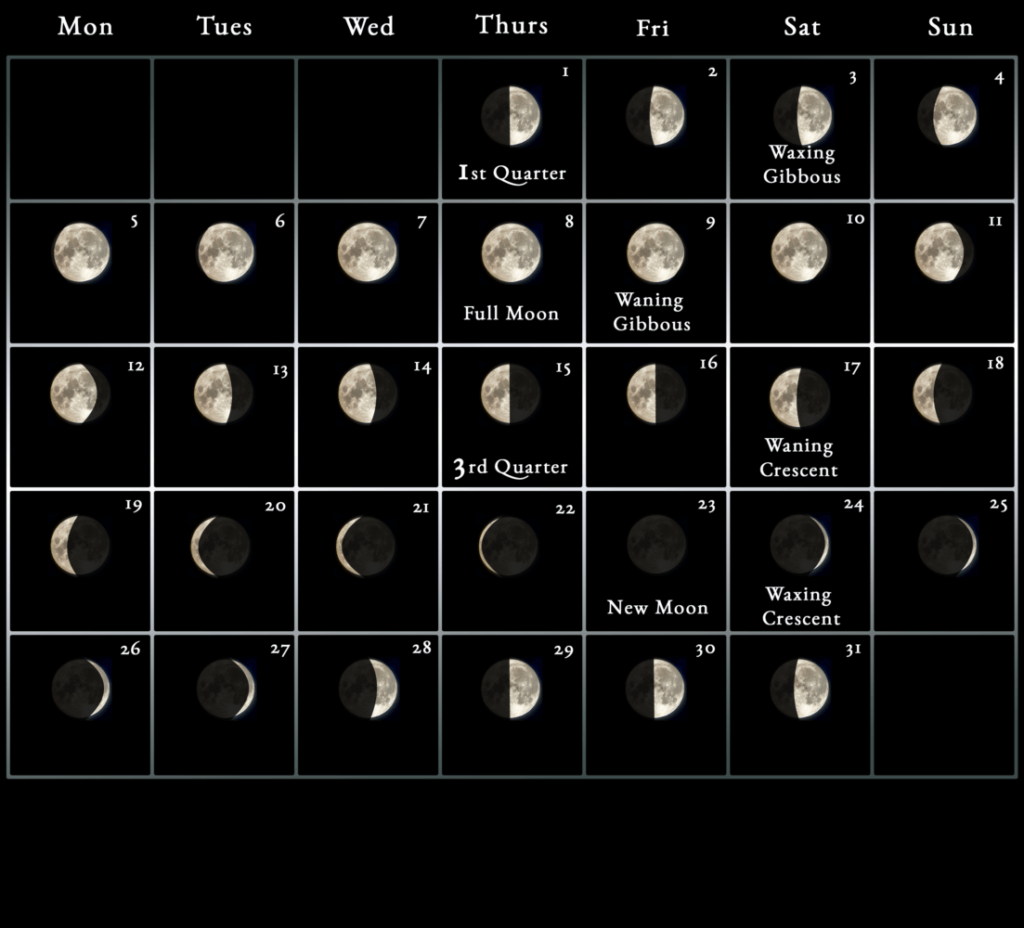All human societies have developed ways to determine the length of the year, when the year should begin, and how to divide the year into manageable units of time, such as months, weeks and days.
Many systems for doing this – calendars – have been adopted throughout history. About 40 remain in use today.
Calendars are social constructs even though they have their roots in astronomy.
All calendars are based on astronomical cycles. The cycles are not constant in length and we cannot know about them to a high-enough level of accuracy to keep a calendar in synchrony with natural events over very long periods of time.
This makes calendars unreliable. Even direct observations made to maintain calendrical accuracy are
themselves subject to error. For this reason calendars are usually based on rules designed to provide a good approximation to astronomical cycles over a period of time.
Must read: How Moon impacts Earth?
Types of calendar
There are three major types of calendar that have been used through history – solar, lunar and luni-solar.
Sidereal (star) calendars have also been used, notably by the ancient Egyptians.
Solar calendars
Solar calendars are designed to keep in step with the tropical year so that the seasons occur at the same
time each year over thousands of years.
To construct a solar calendar the length of the tropical year must be known fairly accurately. This was first achieved by the Egyptians who, sometime just before 2050 BCE measured it as 365.25 days. Of course the extra quarter of a day raises a problem because it is not practical.
The problem was solved by the Julian calendar, established in the Roman empire under Julius Caesar, by having three years of 365 days followed by one of 366 days, referred to as a leap year.
However, even with the introduction of the leap year an error remains. Adopting a calendar year of 365.25 days means that there is still a discrepancy between the length of the calendar year and the mean tropical year, which is only 365.24219 days long.
The calendar year is 365.25 – 365.24219 = 0.00781 days , just under 11.25 minutes longer than the tropical year. This error does not sound very much but over time it builds up and after 1000 years, the seasons would be almost eight days earlier in the calendar year.
A solution was put in place through the calendrical reform undertaken by Pope Gregory XIII (1502–85) that lead to the Gregorian calendar, the major solar calendar in use today. In this calendar, the discrepancies are corrected by having century leap years only if they are exactly divisible by 400. This is called the century rule.
Adopting the century rule means that the Gregorian calendar year is not 365.25 but 365.2425 civil days long.
In the Common Era the century leap years are therefore in 400, 800, 1200, 1600, 2000, 2400 etc; i.e., over each 400 year period there is just one century leap year.
An error of 0.00781 days in each Gregorian calendar year accumulates to 0.00781 x 400 = 3.124 days over 400 calendar years. During this time 3 century leap years have been omitted so the final error is 3.124 – 3 = 0.124 days in 400 calendar years.
This amounts to just 0.124 x 86400/400 = 26.78 seconds per year.
Hence the Gregorian calendar year is 26.78 seconds longer than the tropical year.

Lunar calendars
Lunar calendars are based on the idea that 12 synodic months of 29.5 day makes a year of 354 days. In the past, the first sighting of the young waxing crescent Moon just after sunset marked the start of each month.
Today, tables predicting the first appearance of the crescent Moon are often used instead.
Lunar calendars were developed by the ancient Hebrews, Romans, Celts and Germans.
The Islamic calendar is the major lunar calendar in use today.

Since calendars cannot have half days, the 29.5-day length of the synodic month is accommodated by having 6 months with 30 days and 6 months with 29 mean solar days.
Of course such a calendar runs fast against a solar calendar such as the Gregorian one by about 365.25 – 354 = 11.25 days. Hence lunar calendars are decoupled from the cycle of the seasons.
Any particular day in a lunar calendar will appear 11.25 days earlier with respect to each successive Gregorian year, marching backwards through the seasons, making a complete cycle of the seasons in about 32.5 years in the Gregorian calendar.
Luni-solar calendars
The fact that lunar calendars do not keep pace with the passage of the seasons has been regarded as a
disadvantage. To overcome this many societies have adopted a hybrid luni-solar calendar.
These are lunar calendars which use various devices to bridge the missing 11.25 days so that the calendar year ends up close in length to the tropical year; the year of the seasons.
For example, the ancient Greeks used a lunar calendar of 354 days adding an extra 90 days every 8 years. This was calculated on the basis that 11¼ x 8 = 90 days.
Sidereal calendars
Probably all societies have devised constellations, patterns that help people make sense of the starry sky,
often reflecting their mythologies.
Modern-day astronomy recognises 88 official constellations that together tile the entire celestial sphere.
As the Earth orbits the Sun, different constellations of stars come to dominate the night sky at different times of the year.
This must have been noted by ancient people and indeed the ancient Egyptians, Greeks and Babylonians constructed sidereal calendars based on the movement of the stars.
External link: https://airandspace.si.edu/stories/editorial/science-leap-year
External link: https://www.wwu.edu/astro101/a101_leapyear.shtml#:~:text=There%20is%20a%20leap%20year,1800%2C%20and%201900%20are%20not.

Nicely explained
Excellent work 🤩